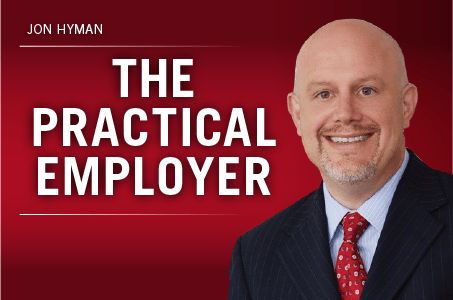We all want to get back to work as safely and as quickly as possible.
One thing that would allow us to do this with confidence is widespread antibody testing, a quick blood test to reveal if one carries the COVID-19 antibodies from which an employer can presume exposure, immunity and a reasonable degree of safety for an employee to return to work.
This testing, however, raises two critical questions.
1. Can employers legally require it?
2. Should employers rely on it as an indicia of safety?
Can an employer legally require antibody testing?
The “can” question is easy to answer. According to the EEOC, because coronavirus is a “direct threat,” employers have carte blanche to test employees, including antibody testing as a return-to-work condition.
The Americans with Disabilities Act prohibits an employer from making disability-related inquiries or engaging in medical examinations unless they are job-related and consistent with business necessity, which includes when an employee will pose a direct threat due to a medical condition.
Also read: What a business operating in the time of coronavirus cannot look like
A “direct threat” is “a significant risk of substantial harm to the health or safety of the individual or others that cannot be eliminated or reduced by reasonable accommodation.” If an individual with a disability poses a direct threat despite reasonable accommodation, the nondiscrimination provisions of the ADA do not protect him or her, and disability-related inquiries and medical examinations are legal and permissible.
Per the EEOC, “As of March 2020, the COVID-19 pandemic meets the direct threat standard,” because “a significant risk of substantial harm would be posed by having someone with COVID-19, or symptoms of it, present in the workplace at the current time.”
Thus, because COVID-19 is a direct threat, employers absolutely can require antibody testing as a condition for an employee to return to work.
Should an employer rely on antibody testing as an indicia of safety?
The more difficult question is whether an employer “should” require it and rely on it.
On Sunday, The New York Times ran a cautionary article, taking major issue with the reliability of COVID-19 antibody tests, which yet do not even have FDA approval.
More than 90 companies have jumped into the market since the F.D.A. eased its rules and allowed antibody tests to be sold without formal federal review or approval.
Some of those companies are start-ups; others have established records. In a federal guidance document on March 16, the F.D.A. required them to validate their results on their own and notify the agency that they had done so.…
Most of the tests offered are rapid tests that can be assessed in a doctor’s office — or, eventually, even at home — and provide simple yes-or-no results. Makers of the tests have aggressively marketed them to businesses and doctors, and thousands of Americans have already taken them, costing a patient roughly $60 to $115.
Rapid tests are by far the easiest to administer. But they are also the most unreliable — so much so that the World Health Organization recommends against their use.
These tests have a false-positive rate of 5 percent (or higher), a significant margin of error when you consider that in a community with a five percent infection rate you’d have as many false positive as actual positives.
Even labs that are marketing these antibody tests to employers are cautioning against their reliability.
This test hasn’t been reviewed by the FDA. Negative results don’t rule out SARS-CoV-2 infection, particularly in those who have been in contact with the virus. Follow-up testing with a molecular diagnostic lab should be considered to rule out infection in these individuals. Results from antibody testing shouldn’t be used as the sole basis to diagnose or exclude SARS-CoV-2 infection. Positive results may be due to past or present infection with non-SARS-CoV-2 coronavirus strains, such as coronavirus HKU1, NL63, OC43, or 229E.
In other words, these tests aren’t reliable because the FDA hasn’t reviewed them, and because of risk of a strand of coronavirus other than COVID-19 flagging a false-positive result.
What does all of this mean?
First, employers should not and cannot rely on currently available antibody tests as the magic bullet to get employees safely back to work. They are simply not sufficiently reliable.
Secondly, for the time being, employers will have to rely on measures other than testing to keep employees safe.
Third and finally, the government needs to ramp up the approval of reliable testing. Without readily available quick and reliable tests we are shooting in the dark by bringing employees back to work, and we will continue to spread infections no matter how many other steps businesses take to attempt safely to return employees to work.








